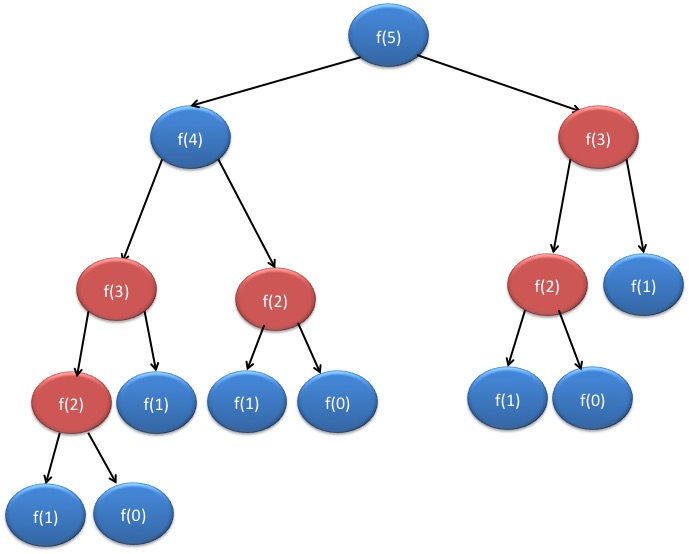If you want to practice data structure and algorithm programs, you can go through Java coding interview questions.
In this tutorial, we will see about Memoization example in java.
Let me start with the question.
Would you like to do same task again and again when you know that it is going to give you same result? I think Answer will be No.
So Memoization ensures that method does not execute more than once for same inputs by storing the results in the data structure(Usually Hashtable or HashMap or Array).
Let’s understand with the help of Fibonacci example.
Here is sample fibonacci series.
So it has recurrence relation of:
So Let’s write recurrence function for it.
|
1 2 3 4 5 6 7 8 9 10 11 |
// Fibonacci without Memoization public int fibonacci(int n){ if( n == 0 ) return 0; if( n == 1 ) return 1; System.out.println("Calculating fibonacci number for: "+n); return (fibonacci(n-1) + fibonacci(n-2)); } |
When you run above code with n=5, you will get below output.
Calculating fibonacci number for: 4
Calculating fibonacci number for: 3
Calculating fibonacci number for: 2
Calculating fibonacci number for: 2
Calculating fibonacci number for: 3
Calculating fibonacci number for: 2
Fibonacci value for n=5: 5
As you can see, we are calculating fibonacci number for 2 and 3 more than once.
Let’s draw a recursive tree for fibonacci series with n=5.
Here two children of node will represent recursive call it makes.

If you notice here, we are calculating f(3) twice and f(2) thrice here, we can avoid duplication with the helping of caching the results.
We will use one instance variable memoizeTable for caching the result.
- Check if
nis already present inmemoizeTable, if yes, return the value - If
nis not present inmemoizeTable, then compute and put the result inmemoizeTable.
|
1 2 3 4 5 6 7 8 9 10 11 12 13 14 15 16 17 18 19 20 21 22 23 24 25 26 27 28 29 30 31 32 33 34 35 36 37 38 39 40 41 42 43 44 45 46 47 48 49 |
package org.arpit.java2blog; import java.util.HashMap; import java.util.Map; public class FibonacciMemoizationAlgorithm { private Map<Integer, Integer> memoizeTable = new HashMap<>(); // O(1) // Fibonacci with Memoization public int fibonacciMemoize(int n){ if( n == 0 ) return 0; if( n == 1 ) return 1; if( this.memoizeTable.containsKey(n) ) { System.out.println("Getting value from computed result for "+n); return this.memoizeTable.get(n); } int result = fibonacciMemoize(n-1)+ fibonacciMemoize(n-2); System.out.println("Putting result in cache for "+n); this.memoizeTable.put(n, result); return result; } // Fibonacci without Memoization public int fibonacci(int n){ if( n == 0 ) return 0; if( n == 1 ) return 1; System.out.println("Calculating fibonacci number for: "+n); return (fibonacci(n-1) + fibonacci(n-2)); } public static void main(String[] args) { FibonacciMemoizationAlgorithm fibonacciAlgorithm = new FibonacciMemoizationAlgorithm(); System.out.println("Fibonacci value for n=5: "+fibonacciAlgorithm.fibonacciMemoize(5)); } } |
When you run above program, you will get below output.
Putting result in cache for 3
Getting value from computed result for 2
Putting result in cache for 4
Getting value from computed result for 3
Putting result in cache for 5
Fibonacci value for n=5: 5
As you can see, we are not computing fibonacci number for 2 and 3 more than once.
That’s all about Memoization in java.


